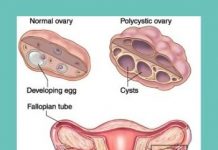Historically, drugs administered via a catheter into the epidural space around the dura, which covers the spinal cord, have been cocaine derivatives which numb motor and sensory nerves, paralyzing the lower part of the body. Modern epidural procedures combine lower doses of numbing drugs with opiates to reduce the motor blocking effect. Called “walking epidurals,” they effectively block pain while allowing limited movement in bed. Walking is not possible.
Epidurals Require Intensive Care Measures
Continuous monitoring of the baby’s heart rate is necessary because epidurals can result in fetal distress. Mothers must receive intravenous fluids to counteract the drop in blood pressure that epidurals cause. A catheter to remove urine from the mother’s bladder is needed because of her loss of sensation. Pitocin is used frequently to speed up labor. Fever over 100.4 is at least five times more likely to occur in women laboring under epidural anesthesia, and to be transmitted to their infants, than in women laboring naturally(1). For first-time moms an epidural-caused fever is not only more likely, but tends to reach higher temperatures(1). Babies born to mothers who had epidural-induced fevers were more likely to be in poor condition at birth and to require resuscitation, according to a large Swedish study. Neonatal fever is a common reason for separation of mother and infant; babies are more likely to undergo blood draws and to receive intravenous antibiotics after birth.
Epidurals Impact Maternal Hormones
Pain relief during labor by epidural anesthesia inhibits production of beta-endorphins in the mother’s body that create the altered consciousness associated with childbirth. Beta-endorphins stimulate the release of prolactin which are necessary for making plentiful breastmilk. Oxytocin peaks during birth in response to the stimulation of stretch receptors in the lower vagina. When these receptors are numbed, mothers need the assistance vacuum extraction and episiotomy (2).
Epidural Drugs Reach the Baby
Medications administered by epidural enter the mother’s bloodstream within minutes and go quickly to the baby in equal levels(2). After the infant’s umbilical cord is cut, the immature liver and kidneys of the baby will eliminate these drugs slowly, about eight hours compared to the mother’s body doing it in less than three hours(2).
Behavioral Effects of Epidurals
Babies whose mothers received epidurals have diminished sucking reflexes and are more disorganized after birth consistent with drug-related neurobehavioral deficits. At one month of age mothers described their infants as “more difficult.” Mothers who had epidurals breastfed for a shorter duration than those who did not have epidural anesthesia(1).
Epidural anesthesia is usually part of a cascade of interventions that begins when labor is induced, because contractions caused by artificial means tend to be more intense. Epidural anesthesia can allow mothers to rest and relax during a long, exhausting labor. However, this type of labor pain relief is not without immediate and possibly far-reaching side effects that impact both mother and infant.











